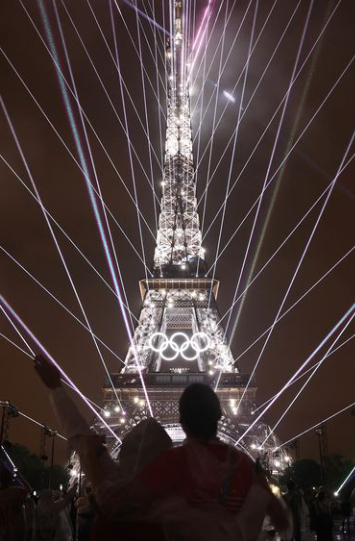
It was an Olympic opening ceremony like never before, as the evening of July 26 turned Paris, one of the most storied cities in the world, into an open-air stadium. At the end of it, the Olympic cauldron soared high above the ground, meant to be seen from all over the city.
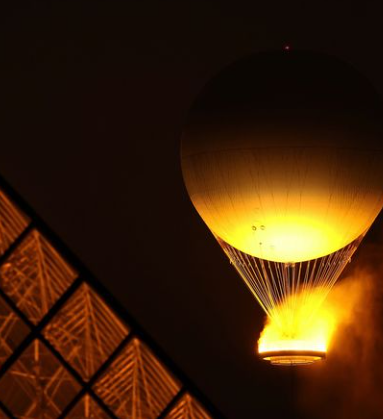
Unprecedented and irreverent, the Paris ceremony was everything French — from the classic Can Can dancers to the beloved cartoon Minions.
This was also an opening ceremony made for the live-streaming generation, as many of the performances were best viewed on the television screen, even as Parisians thronged the banks of the Seine to see the national teams cruising down the river.
Team Greece opened the parade of nations, as is Olympic custom, with the Olympic motto “Citius, Altius, Fortius” displayed on one of arches along the Seine.
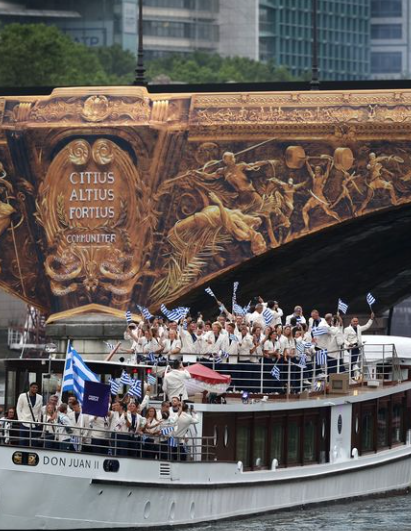
Several kilometres of the river and the structures nearby became performance spaces as the boats carrying the teams kept coming. It drizzled throughout the evening, but the ceremony never missed a step.
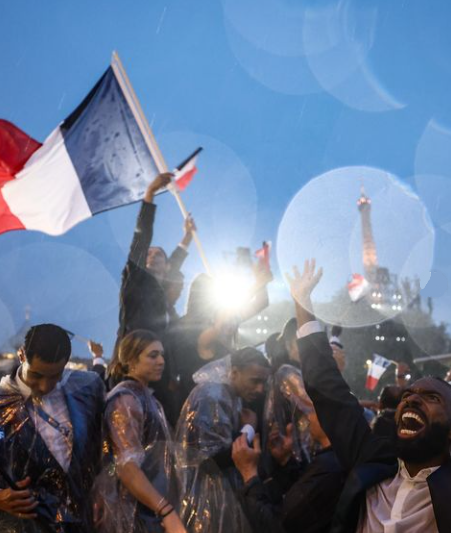
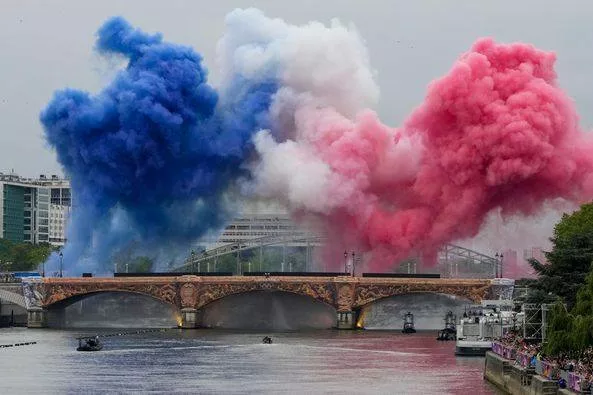
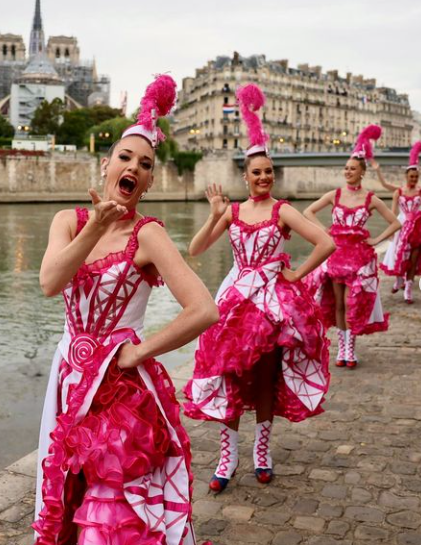
Hard rock met opera, and street dancers in splashy water beds were complemented by acrobatic dancers in hard hats, using a scaffold high up as their stage.
Global superstar Lady Gaga and young French musician Aya Nakamura presented two very spectacular numbers. The evening ended with a stunning song by French-Canadian pop legend Celine Dion.
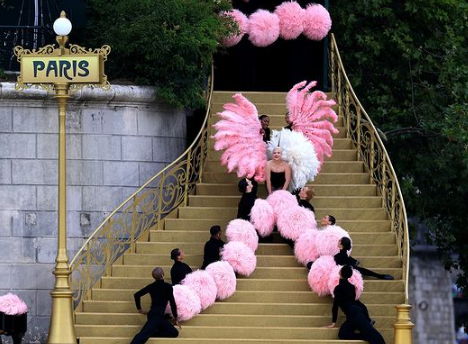
Amidst all the colours and celebrations on the ground and on the water, a mysterious hooded figure ran across rooftops, carrying the Olympic flame towards its final destination, the Olympic cauldron where the fire would be lit.
The runner passed through several eras of French history and revisited some remarkable episodes, such as the 1911 theft of the Mona Lisa from Musée Du Louvre Paris.

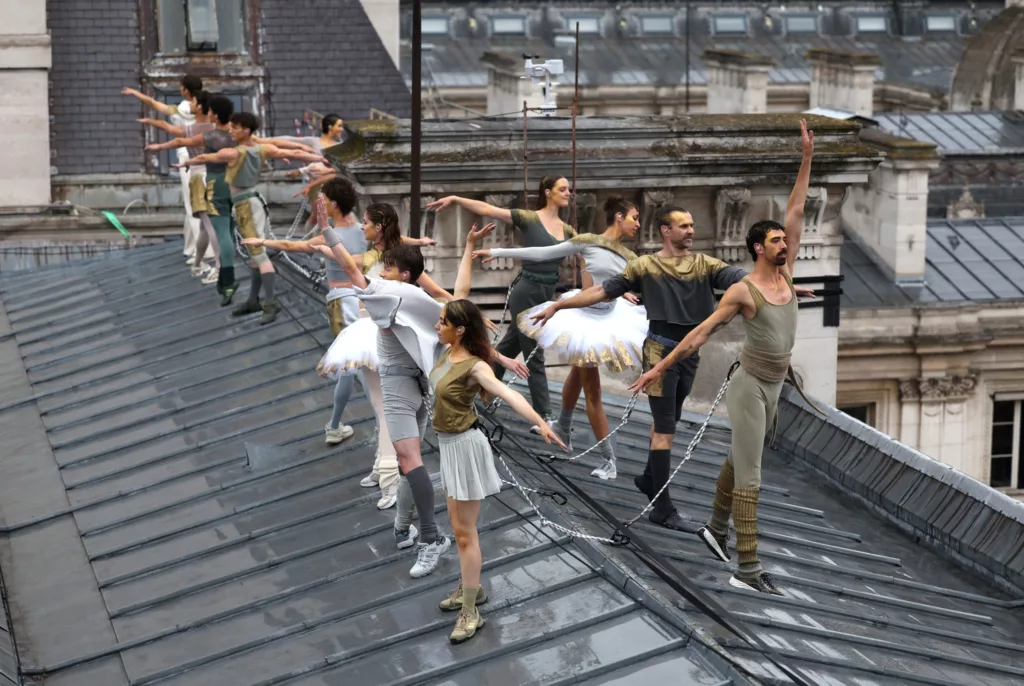
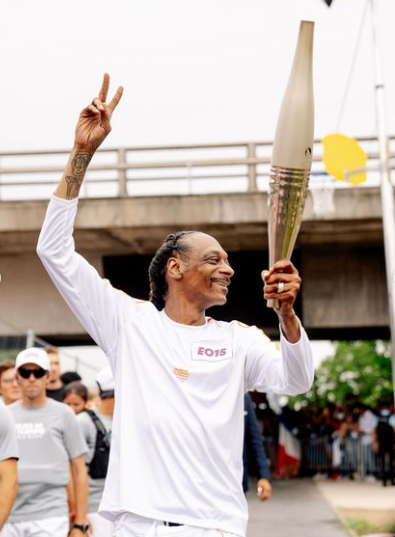
As the team boats cruised down the Seine, golden statues of pioneering French women began emerging from pillars placed at both edges of the river.
Soon, evening transitioned to night and — winning gold for creativity — the Olympic opening ceremony organisers sent a mechanical horse and rider galloping down the Seine, down an arrow-straight watery path that would take the horse towards the Eiffel Tower, for the culmination of the ceremony.
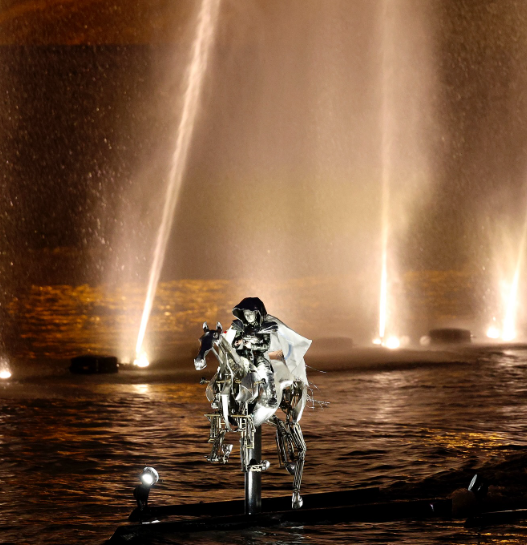
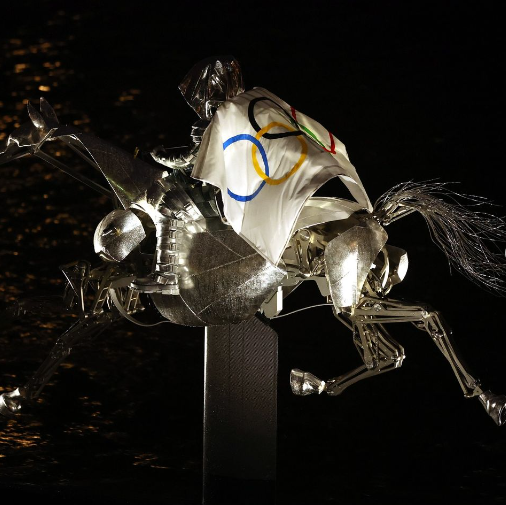
Then, flag-bearers of each national team took their place near the river bank, as a real horse and its rider advanced towards the ceremony stage, whose shape mimicked that of the tower.

Also hooded, and dressed in armour, the rider alighted from the horse, received the Olympic flag, and took it up to the stage for hoisting.
At this point, the Olympic torch had also arrived on the stage — American rapper Snoop Dogg was part of the torch relay — and it was received by French football icon Zinedine Zidane, to the ecstasy of the crowd.
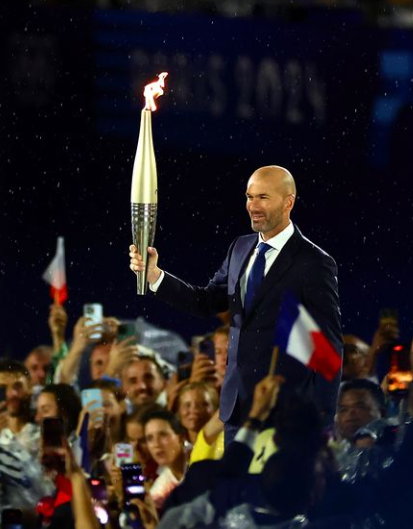
The torch was then passed to Spanish tennis legend Rafael Nadal, whose 14 French Open titles make him, perhaps, part-French.
Carrying the Olympic flame, Nadal got onto a boat, accompanied by three other all-time greats: sprinter and long jumper Carl Lewis; gymnast Nadia Comaneci; and tennis player Serena Williams.
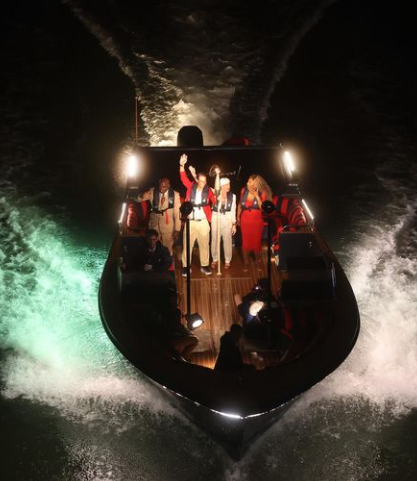
After a ride down the river, the Olympic flame entered the final leg of its journey, being handed over to French tennis champion Amélie Mauresmo.
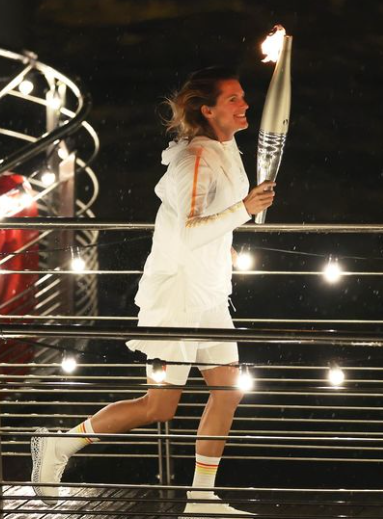
Mauresmo ran with it for several minutes, her free hand extended to greet the people gathered along her route.
That route ended at the location of the Olympic cauldron — Jardin des Tuileries, the famed public garden between the Louvre museum and Place de la Concorde.
Passed from hand to hand, carried by sportspersons from different decades, the Olympic flame was finally with judo champion Teddy Riner and track and field champion Marie-Jose Perec. They would light the fire that would burn throughout the Olympic Games.
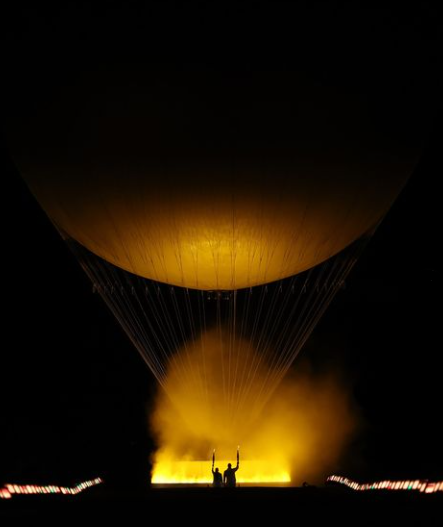
Like everything beyond imagination at the Paris ceremony, this Olympic cauldron, too, would defy all expectations.
Designed as a gas balloon, the Olympic cauldron was placed at the same location in Paris from where the first modern manned hydrogen balloon took off in December 1783.
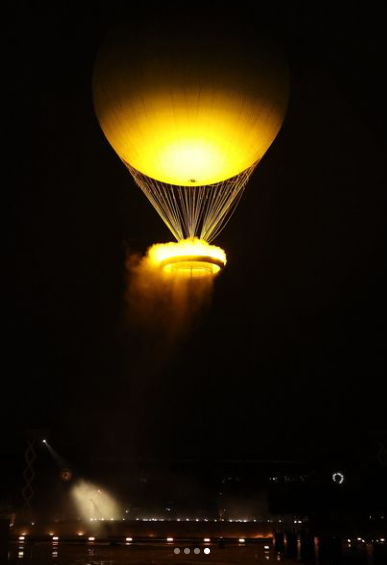
As the two champions lit the cauldron with their torches, a glorious ring of fire was formed — slowly, the Olympic cauldron began to rise in the air. It rose high up, tethered to the ground with a barely visible line, high enough to be seen across Paris. And with that, the Paris Olympics 2024 officially began.


